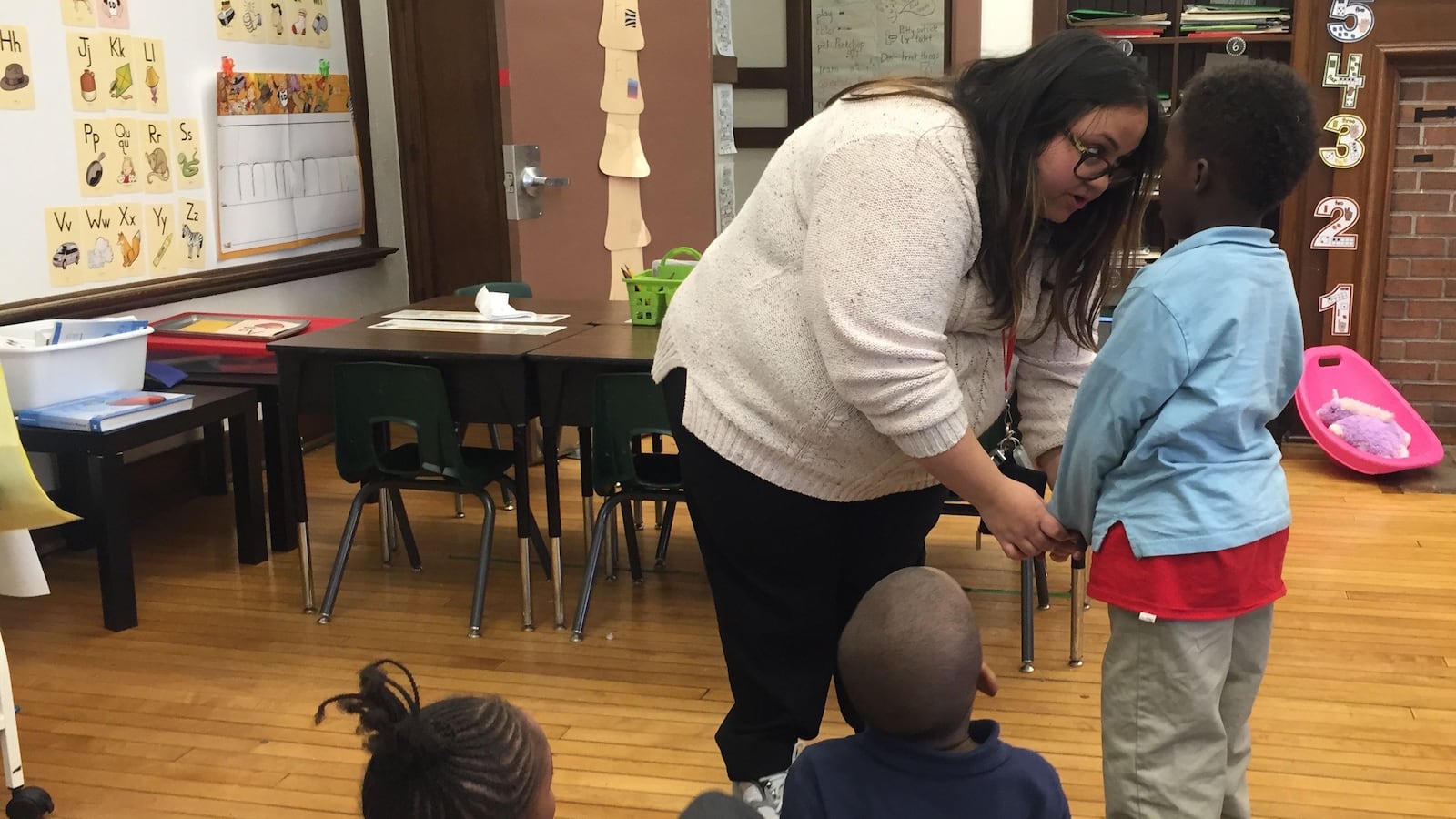Is a “war on teachers” driving them out of the classroom?
In many states, teachers and their unions have made that case, noting that it’s become tougher to earn tenure, bargaining rights have been diminished, and more of their evaluations are based on test scores.
A new study tries to find out whether the two — recent policy changes and teacher turnover — are really linked. Its findings make it the latest in a handful of recent studies to suggest that the weakening of teachers unions and job protections hits already-struggling schools the hardest.
Focusing on Michigan, the researchers find that a spate of teacher-focused policy changes passed in 2011 and 2012 did not cause an overall increase in teacher turnover. But at schools with lower test scores or more students in poverty, teacher churn jumped.
This, the researchers say, raises an important concern: “That teacher labor market reforms like those implemented in Michigan may disproportionately impact the poorest schools and school districts — those already facing staffing constraints.”
How that turnover affects students is not always clear. In general, teacher turnover has been linked to worse student outcomes, but it can be beneficial if new teachers are better than the ones they replaced. In this case, the researchers don’t know whether teachers left voluntarily or involuntarily, or how effective those teachers were.
The paper, released through Michigan State’s Education Policy Innovation Collaborative, examines a series of laws passed in that state in 2011 and 2012. Those laws introduced a new teacher evaluation linked to student test scores, lengthened the time before a teacher could attain tenure, prohibited districts from prioritizing teacher seniority when making layoff decisions, and instituted “right-to-work” provisions that blocked districts from requiring teachers to join unions.
In the years after the laws were passed, teacher turnover spiked. But the researchers say this doesn’t show the impact of the laws, since other factors — like the recession and its after-effects — may have driven those changes.
So to isolate cause and effect, the researchers compared districts where the new laws went into place right away to those that didn’t see changes for a few years. (Some districts had union contracts that were allowed to be maintained until they expired.)
Teacher turnover looked similar in both groups of districts, indicating that the policy changes weren’t what made the difference. Turnover rates for teachers also mirrored those for other school professionals, like counselors, social workers, and psychologists, who researchers assume were less affected by the changes.
“This suggests that the reforms labeled part of a ‘war on teachers’ may not depress teacher morale to the point where they result in a large loss (at least in the short run) of teachers from the profession,” the study says.
(One complicating factor: If everyone in schools, not just teachers, felt like there was a broad-based “war on schools” — and that was true in all districts — this study would not capture the laws’ true influence.)
But the researchers find something different when focusing on disadvantaged schools — both those with more poor students and those with lower test scores — which often have the hardest time keeping teachers. The new laws increased teacher turnover in high-poverty districts from 6.5 percent to about 8 percent each year.
The latest research joins recent research that tries to identify the impact of weakening teacher job protections. One found that gutting unions in Wisconsin substantially reduced student test scores; another showed that limiting teacher tenure in Louisiana led to a spike in teacher turnover. Both papers found the impact was largest on low-performing schools.
Other research, though, has painted a more positive picture. Studies in Chicago, Charlotte, New York City, and Washington, D.C. have linked scaling back job security or seniority provisions to better student outcomes or improved teacher quality — and in some cases those effects have been most felt in disadvantaged schools.
“Perhaps our most important conclusion from this work may be that policymakers should be attuned to the ways in which any major changes to the public education system affect different teachers and different children in different ways,” the Michigan study concludes.


